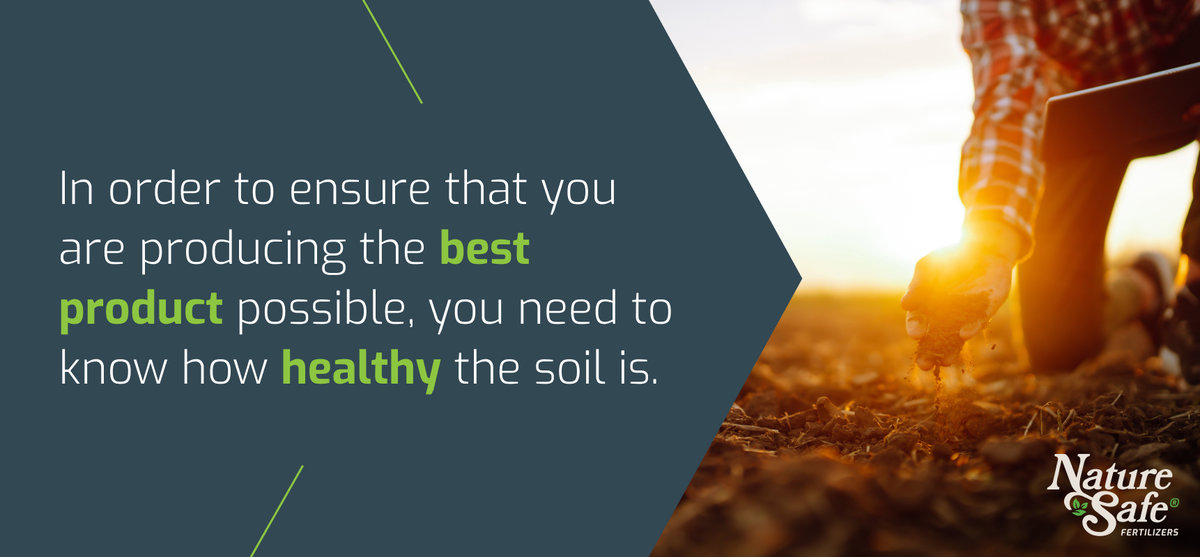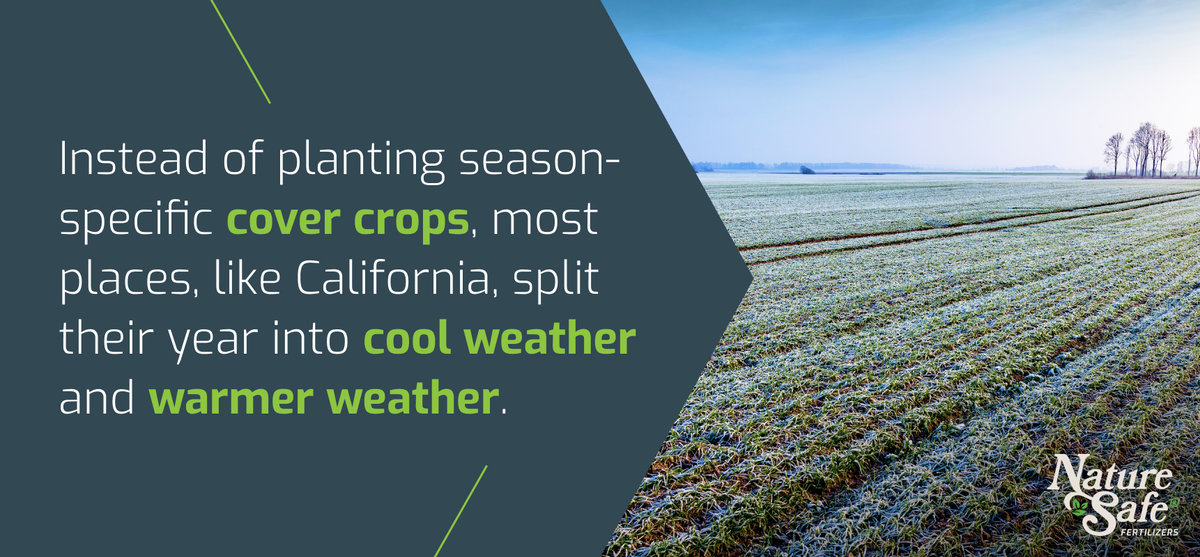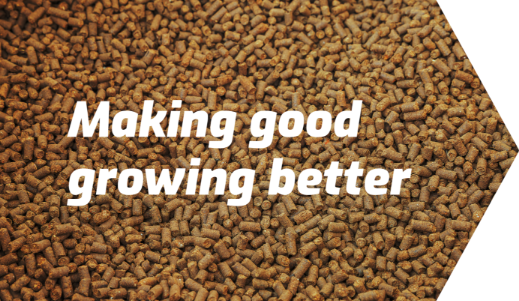
Soil testing can tell you exactly what your soil is missing or has too much of so that you can make the necessary fixes. Indicators such as pH, salinity, and the amount / ratio of nitrogen, phosphorus, and potassium, as well as secondary nutrients, trace elements and micronutrients, can all be tested and quantified.
As much as we would like them to, plants can’t talk to us and tell us what they need. Your crops or turf grass can’t speak for themselves, so you have to do some scientific investigation to figure out what they need to thrive.
Soil tests look at a number of things that your soil might lack or have in overabundance. If your crops or turf aren’t doing as well as they should, it might be time to see what’s in your soil.
Why Do I Need to Test My Soil?
Home gardeners are usually the target market for soil tests, but commercial ventures can benefit from them as well.
We know that plants need more than just water and sunlight—that’s why you’ve invested in organic fertilizers. While experienced agronomists might be able to identify certain problems simply by looking at the plant, not all growers possess this kind of expertise, and many issues are not visually obvious.
That’s where soil testing comes in. In order to ensure that you are producing the best product possible, you need to know how healthy the soil is. The most important pillar of healthy plants is healthy, fertile soil.
All living organisms need certain nutrients to live. The same is true for the organisms living below the surface, like bacteria and fungus in the soil. Too much or too little of certain nutrients can have negative impacts on the health of all of the organisms in the soil ecosystem.

What to Look For in a Soil Test
In order to take the most holistic approach to soil health, you need to look at everything that might not be immediately obvious. Through at-home tests or, more likely, soil testing services, you can get a whole-picture idea of how to grow the healthiest crops or turf possible.
pH
The pH scale is a measure of acidity. It goes from 0-14, with 0 being the most acidic, 7 being neutral, and 14 being alkaline. For some perspective on what is considered acidic, lemon juice is two, while pure water is seven.
Different plants do better with different levels of acidity or alkalinity in the soil. Generally, soil with too low of a pH, or too acidic, inhibits the intake of nutrients, and often has too much iron and manganese.
However, a slightly acidic soil, in the 5-6 range, promotes nutrient solubility. If a nutrient is able to be dissolved in water, roots can uptake it far more easily.
Potatoes and blueberries prefer more acidic soil, around a pH of 5. A pH level of 5.5-6 is ideal for most crops, including barley, corn, and wheat. Others, like crimson clover, prefer a neutral soil.
If your soil test reveals that your soil is too acidic, adding lime can help bring it closer to neutral. If the soil is too alkaline, sulfur will bring down the pH. Some parts of the United States naturally have more lime in their underground reservoirs that are used for irrigation, making the soil too alkaline and inhospitable for crops.
Salinity
Testing for salt in the soil can also be beneficial. Besides preventing proper water uptake in the roots, high salinity can be an indicator of overall poor soil health. Poorly draining soil will keep water near the top, leading to evaporation, which will leave excess salt behind.
This is typically a problem from salty irrigation sources. The best way to fix soil salinity is to improve drainage which will reduce evaporation.

The Big Three - nitrogen, phosphorus, potassium
While a lot of different nutritious elements play a part in healthy soil and plant growth, there are three of paramount importance. Nitrogen, phosphorus, and potassium are the core of all fertilizers. Fertilizer labels usually display how much of each nutrient the product contains in a form called the “NPK ratio”.
Nitrogen
Plants need nitrogen in the highest amounts. It is a major player in the creation of chlorophyll, the pigment that makes plants green and photosynthesize. Nitrogen is also essential in amino acids, the base of proteins that provide the structure of the plant. Too little nitrogen will cause the leaves and stalks to yellow.
Nitrogen can come from many different sources, including the atmosphere. It is used up fairly quickly, meaning it doesn’t stay in the soil to be seen by soil tests. Some tests don’t bother measuring nitrogen for this reason.
Phosphorus
Phosphorous aids in protein synthesis. Without proper levels, crops won’t grow as well or as quickly as they should. Phosphorus-starved plants often appear short, with too few leaves and branches.
Potassium
All of the big three macronutrients work together for robust, healthy crops and grass—if a plant can’t consume nutrients, it can’t grow. Potassium aids in the uptake of other nutrients and water, as well as the production of other compounds needed for photosynthesis.
Other Nutrients
Additional important nutrients include calcium, magnesium, iron, and carbon, among others. Soil tests usually look for sulfur, calcium and magnesium. Magnesium and sulfur are vital for chlorophyll and photosynthesis. Calcium is a major structural component in the cell wall. Low amounts of calcium can lead to blossom end rot.

How to Take a Soil Sample
In order to get the most accurate representation of soil health from a large area, the USDA recommends collecting five to ten soil samples from across your field. Make sure you mark where you took the samples from.
For turf, only the top four inches of soil is necessary to test. The same goes for no-till farm fields. For tilled fields, samples must be the top eight inches. Soil sample tests for tree crops need to be the top eight inches, as well as the next eight to 24 inches of soil.
While home-owners and home gardeners have the luxury of at-home soil tests, those in charge of large-scale operations will most likely need to send samples to professional soil testing services due to the extent of land to be tested.
Finding the Right Fertilizer
Once you’ve done your soil testing, it’s time to fertilize accordingly. While some issues need to be solved by adding specific ingredients like lime, others can use simple, safe, organic fertilizers.
Nature Safe produces organic and fortified fertilizers with varying NPK ratios to accommodate the needs of your crops or turf. Reach out today to give your plants everything they need to grow strong and healthy.
